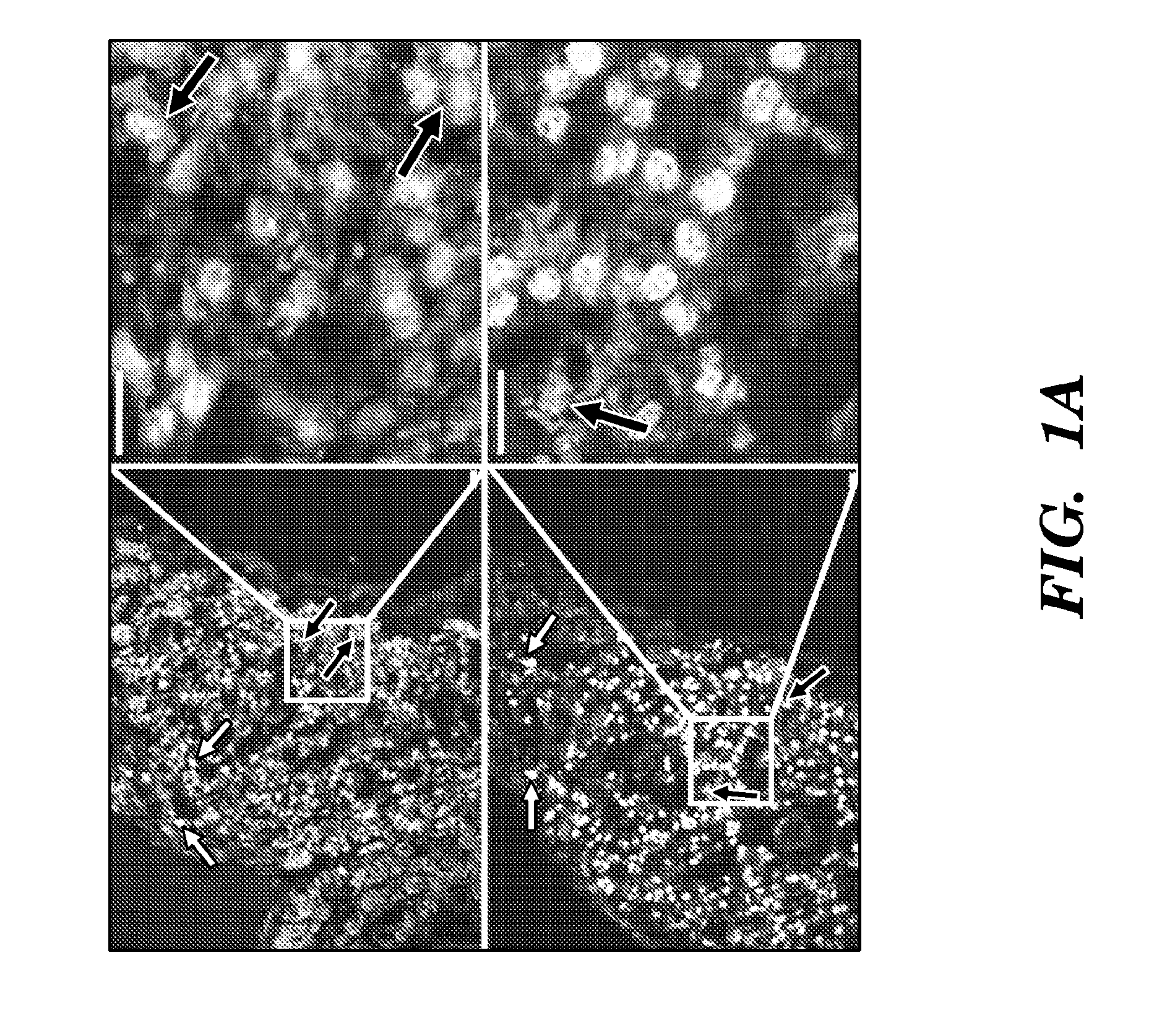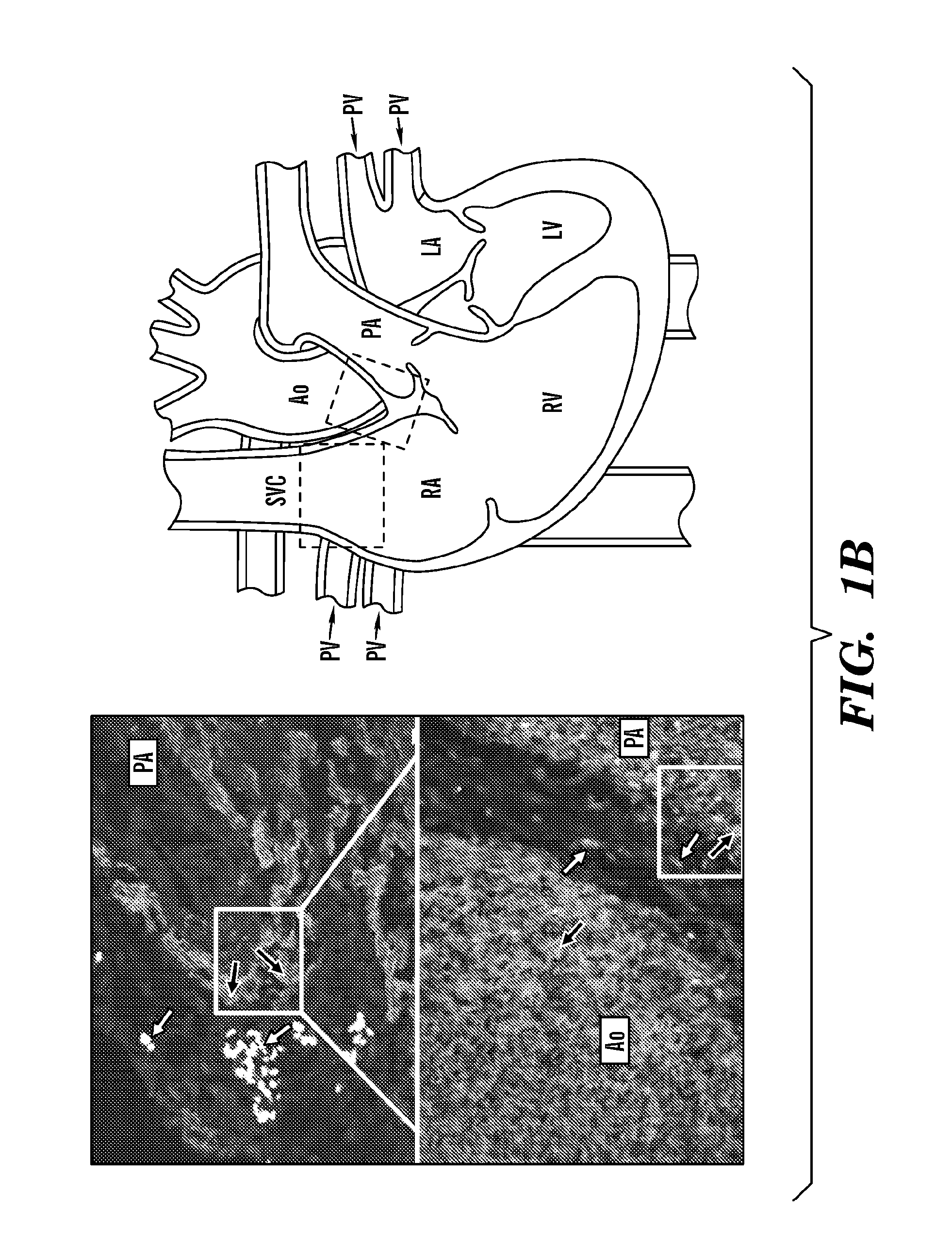Generation of vascularized human heart tissue and uses thereof
a human heart and vascularization technology, applied in the field of tissue, organ and cell transplantation, can solve the problems of lack of long-term benefits, failure to achieve cardiac cell regeneration, and high cost, and achieve the effect of increasing or decreasing blood flow
- Summary
- Abstract
- Description
- Claims
- Application Information
AI Technical Summary
Benefits of technology
Problems solved by technology
Method used
Image
Examples
example 1
[0484]To localize ISL1+ heart cells during human cardiogenesis, the inventors employed immunofluorescence microscopy in serial sections of human fetal hearts at 11 and 18 weeks of gestation. ISL1+ cells were found in the right atrium (RA) and outflow tract (OFT), both second heard field (SHF)-derived structures (FIG. 1), as well as in the left atrial wall and appendage. In particular, the inventors demonstrated that in vivo expression of ISL1 in the human fetal heart using hematoxylin eosin staining of left atrium and left atrium appendage of a human fetal heart at 11 weeks of gestation (data not shown). The inventors also performed double immunostaining of sections of the human heart from RA region with antibodies directed to ISL1 and antibodies directed to one or more of cTNT, SMMHC, PECAM1, NKX2.5 and detected double immunostained cells positive for ISL1 and PECAM1 (data not shown).
[0485]Thus, the inventors demonstrated that ISL1+ cells in the human fetal heart are found in patte...
example 2
[0489]To obtain purified populations of ISL1+ cardiac progenitors, the inventors isolated DsRed+ cells by FACS on EB day 8 (FIG. 3B). RT-PCR analysis revealed that the expression of cardiac markers ISL1 and NKX2-5 is 30- and 8-fold higher in DsRed+ cells than that in DsRed− population, respectively (FIG. 3C). Interestingly, both FACS and RT-PCR analyses demonstrated that DsRed+ cells did not express KDR when isolated on EB day 8 (FIG. 7A-7B).
[0490]To assess the differentiation potential of human ISL1+ progenitors, the inventors performed clonal assays on single DsRed+ cells. The inventors them isolated DsRed+ cells from day 8 EBs and plated them at low density on mouse embryonic fibroblast (MEF) feeders. Colonies of DsRed+ cells were observed within seven days at a cloning efficiency of 0.2-0.5%. The inventors demonstrated that FACS isolated DsRed+ cells from day 8 human ISL1-cre DsRed EBs formed colonies on MEF feeders after 7-day and 14-days (data not shown). The inventors perform...
example 3
[0500]Cardiovascular disease is the leading cause of death in the U.S., and will be the primary cause of mortality in developing countries by 2010, as estimated by the WHO. Nevertheless, the demand for transplantation exceeds the availability of donor hearts. In this regard, cardiac regeneration has recently become an active area of research. Over the past few years, numerous reports demonstrate cardiac progenitors from diverse fetal and adult tissues outside the cardiovascular system, including adipose tissues, amniotic fluid, bone marrow, placenta, skeletal muscle, and testes (Franco et al., 2007). However, their low frequency of cardiac differentiation (Murry et al., 2004) and lack of long-term benefits fail to achieve cardiac cell regeneration (Fazel et al., 2006, 2008). Bone marrow cells, for instance, may improve the function of the infarcted heart mainly by promoting angiogenesis or cell survival without cardiac muscle regeneration (Fazel et al., 2006, 2007). A recently disco...
PUM
| Property | Measurement | Unit |
|---|---|---|
| concentration | aaaaa | aaaaa |
| concentration | aaaaa | aaaaa |
| concentration | aaaaa | aaaaa |
Abstract
Description
Claims
Application Information
 Login to View More
Login to View More - R&D
- Intellectual Property
- Life Sciences
- Materials
- Tech Scout
- Unparalleled Data Quality
- Higher Quality Content
- 60% Fewer Hallucinations
Browse by: Latest US Patents, China's latest patents, Technical Efficacy Thesaurus, Application Domain, Technology Topic, Popular Technical Reports.
© 2025 PatSnap. All rights reserved.Legal|Privacy policy|Modern Slavery Act Transparency Statement|Sitemap|About US| Contact US: help@patsnap.com



